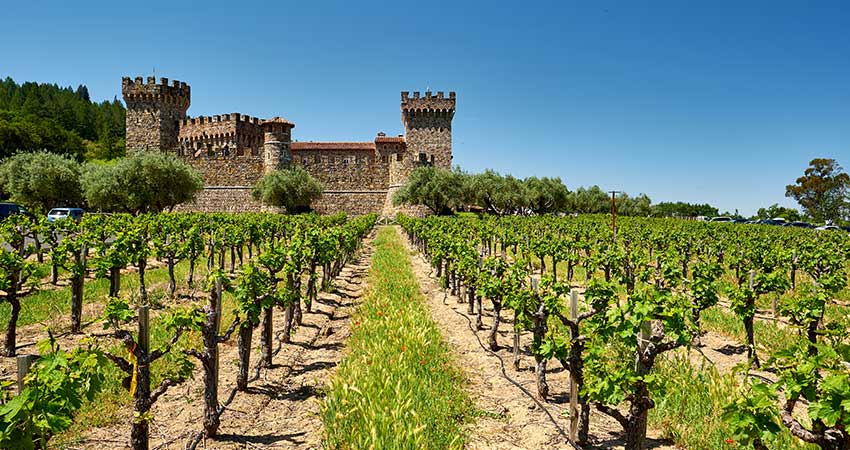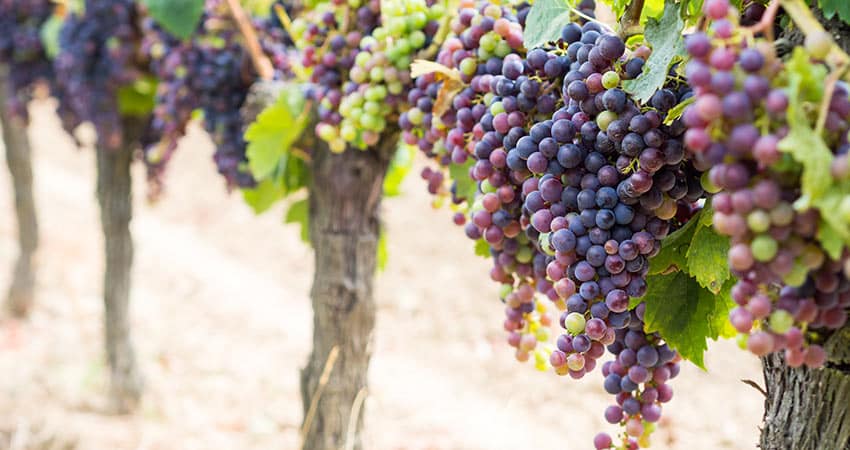Napa Valley experiences are sublime. Some wine is spicy and voluptuous. Some is a tease of sweet followed by an intense buzz. Others are bold and brazen. All wines, we believe, are sexy. Stroll through award-winning vineyards, talk with a winemaker, or sip fine wines with lush views of the valley. Northern California’s Napa Valley is one sensual delight after another.

Share this Graphic On Your Site
Wild wine grapes grew in the Napa Valley for centuries. George Yount, mountain man and fur trapper, arrived from New Mexico in 1831 and saw the possibilities. He received two land grants from the Mexican government and built a cabin, grist mill, and a saw mill. In 1839, he became the first to plant Napa Valley grapes. (The grist mill now houses fine shops and restaurants—it’s well worth a visit.)
Charles Krug started Napa’s first commercial winery in 1861, one year after he married General Vallejo’s granddaughter. Krug had arrived from Prussia in 1851, became a citizen, and he apprenticed himself to Sonoma’s finest winemaker. His wife’s dowry included 540 acres just north of St. Helena. Krug carefully selected rootstocks and vineyard sites, sharing his knowledge with others in the young wine industry.
One enterprising young man wandered into a Napa Valley saloon in what would become Calistoga. Drunk on hot springs and strong spirits, he said to the barkeep, “I’m going to make this place the Calistoga of Sarafornia.” And that’s how Calistoga got its unusual name. Spiritualists soon arrived from San Francisco. Today, this is a sweet town with country-elegant cuisine.
There were 140 wineries working at full production in 1889, including Schramsberg, Beringer, and Inglenook. At the turn of the 19th/20th century, the wine business took a turn. There were more grapes than clients. Shipping was a problem. A root louse came through, destroying 80% of the vineyards. In 1920, still reeling with setbacks, Prohibition became law. When it was repealed in 1933, vineyards were bought and revitalized.
Today, Cabernet Sauvignon is king in Napa. This grape accounts for more than 40% of the county’s total production, and 55% of Napa’s crop value. Chardonnay comes next and grows particularly well in the area closest to the Bay. Merlot has been a favorite since the early 1970’s; it grows in many areas, and ranges from being light to full-bodied, depending on soil and sun. The Pinot Noir grown here is perfection. Napa’s Sauvignon Blanc is intense and fruity.
Old Zinfandel vines, a mainstay of California winemaking in the 19th century, create wine with a heady taste and a punch. Sometimes it’s used to fortify other wines. Walk through Zinfandel vineyards. The aged bases are gnarled and beautiful. They are survivors.
Delight in Napa’s wine country. When you see a dirt road, rolling between two vineyards, take it. Napa nudges you to remember priorities. Rent a convertible and feel the freedom. Explore, and look for secret, older parts of the county that still exist.
Wine country wants you to lose yourself and let everything go. Be Italian for the weekend. Be French for a week. Ask yourself, “What is more important, right now, than feeling fully alive?”
If you’re dreaming about California’s fabled Napa wine country, let your Destination Expert know!











